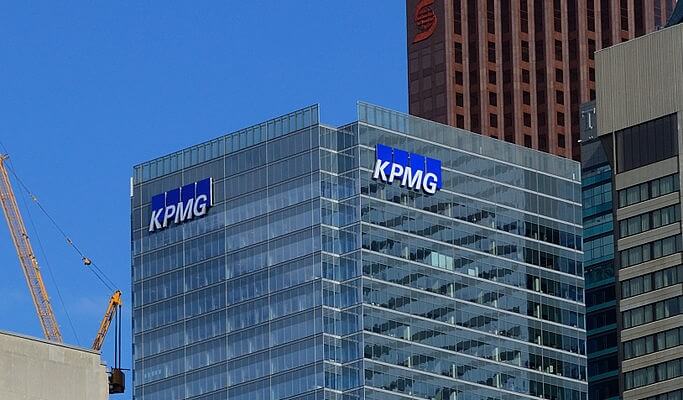Well, looky there, Sarbanes-Oxley requirements.
In a perfect world, a private company that is planning to go public would take 12 to 24 months before the initial public offering launch date to make sure all of its i’s are dotted and t’s are crossed. But the world we live in ain’t perfect, and certain factors can speed up that IPO timeline.
For example, a significant foreign acquisition, with operations in Germany and the Philippines, was completed just prior to the IPO process starting at Microtune Inc., which resulted in the company going public sooner than anticipated, according to Michael Bodwell, CPA, an audit partner in the Dallas office of public accounting firm Whitley Penn, who was corporate controller at Microtune when it hit the stock exchange in August 2000.
Members of accounting and finance departments discuss every angle of the IPO process. Read more.
“Preparation for Microtune’s IPO took about six months,” he said. “The foreign acquisition, which increased the size of our operations, made the IPO possible. The timeline would have been longer if the acquisition wasn’t completed, as it would have taken more time to grow the company’s operations to a size that an IPO made sense.”
Bryan Graiff, CPA/ABV/CGMA, CVA, CFE, CM&AA, also was corporate controller for a company that went public earlier than planned. He was hired by the supplier in the aerospace defense industry in spring 1998 and the plan was for the company to file the IPO before the end of the year. The company ended up going public in late July 1998.
“I was hired [as controller] because of my experience auditing public companies. Because of the [Securities and Exchange Commission] reporting structure, the CFO recognized that the company needed a controller with SEC experience that could help coordinate all the audit requirements,” said Graiff, who currently is partner in charge of the Transaction Advisory and Litigation Support group at St. Louis-based public accounting and business advisory firm Brown Smith Wallace. “If I remember correctly, we had to undergo a three-year audit with a Big 4 firm. This was a lot of work, but it really helped set the stage for our accounting team. After the audit, they had a better understanding of the public company reporting requirements and what it would take for the company to adhere to them going forward.”
Regardless of the timeline—whether 24 months, 12 months, or six months—an important job of the corporate controller is to make sure his or her accounting team is prepared to tackle the IPO head-on. But if the team is not running like a well-oiled machine, the IPO may be in need of a tune-up.
“I think we were able to complete our IPO in a timely manner because we had a great team working on the project,” Bodwell said. “The importance of having a great team in place to work on an IPO cannot be understated. If any team member—internal or external—cannot do their part to prepare for an IPO in a timely basis, the entire IPO process can fall apart.”
Steps controllers took to get their teams IPO-ready
Bodwell shined a spotlight on two steps that were taken to make sure Microtune’s finance function was ready for the IPO experience.
“The first step from a finance perspective was to make sure we had good historical audited financial statements, including the foreign operations we had recently acquired. This took about six months and took a lot of effort by multiple people, such as myself who was hired in anticipation of preparing for the IPO,” he said.
“Second, we added a couple of other key members on the accounting side as we prepared for the IPO,” Bodwell continued. “For almost six months on the finance side, the CFO, U.S. controller, German controller, Philippines controller, U.S. assistant controller, and myself dedicated almost all of our time to prepare for the IPO, including many long workweeks. We also kept our auditors very busy over that six months, including having the U.S. audit senior manager fly over to Germany and the Philippines with our team to oversee the audit work being done in those countries, to ensure U.S. accounting and auditing standards compliance. We knew it was important to have the historical financial statements ready, but we also needed to ensure we had a team and good internal processes that would allow us to prepare accurate and timely financial information during and after the IPO.”
When JetBlue Airways Corp. was in the preparation stage for its IPO, the accounting team was busy ensuring that the low-fare airline’s accounting and financial reporting was up to par, as well as drafting the Form S-1 registration statement or prospectus, according to Holly Nelson, CPA, CGMA, who was JetBlue’s corporate controller and chief accounting officer when it went public in April 2002.
“We were able to accomplish that in six months with our existing staff and did not hire any consultants other than the underwriters and our SEC counsel,” said Nelson, who is currently CFO at Silver Star Brands Inc., an Oshkosh, Wis.-based direct marketer of consumer gifts and household products. “You really can’t do that post-Sarbanes-Oxley, as now you need to ensure that you have all the appropriate controls, processes, and documentation in place. That alone adds a minimum of six months, if not a year, to the process as you need to ensure your controls are working effectively and do not result in significant deficiencies or material weaknesses after the company is in the public markets.”
Nelson shared the following three steps she and her team took to prepare for JetBlue going public:
1. Evaluated accounting policies. “We reviewed our current accounting elections and ensured that they were appropriate for our industry,” said Nelson, who also held financial leadership positions at Frontier Airlines, Virgin America, Eos Airlines, and Northwest Airlines. “Part of the process would be to assess if our election would be acceptable to the SEC. We would also assess our policies against our primary competitive set in the hope that when our results were compared by the analysts, they were comparable as they could be.”
2. Benchmarked reporting, including key performance indicators, to determine what JetBlue’s reporting would be as a public company. “The process would include all the key financial statements—income statement, balance sheet, cash flow, and stockholders’ equity,” she said. “Using the appropriate set of comparative companies, we would survey what line items they utilized, as well as what footnotes they presented and in what order. That would give us data to determine what would be appropriate for our company. An airline’s key performance indicators are its operating statistics. Even though operating statistics were already being reported in monthly traffic releases, it was a good exercise to perform to validate we were happy with the current presentation. For an airline, that is something to do very early on in the process.”
3. Ensured the monthly review process resulted in accurate accounting. “We made certain that the monthly close process was robust enough to ensure that the income statement made sense by investigating variances to budget, prior month, and prior year. That would be followed by the balance sheet account review process that included preparation of proper account reconciliations and then independent review. Appropriate management review was required for areas of judgment and high degree of estimation. These were also usually identified as critical audit areas by the independent auditors,” Nelson said.
IPO preparation isn’t easy
But getting the company’s financial house in order before the IPO is filed isn’t an easy task for controllers and their teams. They often have to face—and overcome—several challenges during their IPO preparations. Bodwell, Graiff, and Nelson were no exception.
“Our biggest challenge was to have the historical operations for the foreign company we had just acquired converted to U.S. GAAP financial statements, including having the financial statements audited by our public accounting firm,” Bodwell said. “First, we had to identify the differences between the foreign basis of accounting and GAAP. Next, we went back three years and adjusted the separate foreign financial statements for the multiple differences in accounting that were identified, which was a substantial effort. We also kept the auditors in the loop as changes were being made so they could complete their audit quickly once we were done.”
The largest challenge Graiff and his team faced was improving the close process so they could report earnings by the SEC deadlines, he said.
“This is something that most privately-owned companies do not have to worry about,” he said. “When I started at the company in April, the year-end books were still not closed. We had to process map the closing tasks to identify the bottlenecks slowing down the process and speed up the tasks that were dependent on subsequent tasks to keep everything flowing quickly. In the end, we improved the closing process from the usual 45 days to around 10 days, which provided valuable time to reconcile the accounts and perform our analysis to assist with earnings releases.”
Another challenge was reporting accuracy, according to Graiff. “We had to restructure our group to focus on timely account reconciliations and analysis,” he added. “We had a good assistant controller and one general ledger accountant. We also had an accounting graduate working in accounts receivable. We beefed up our general ledger team by moving her into general ledger and hired someone to replace her in accounts receivable. This ensured we had adequate staff to complete all our account reconciliations on time and accurately.”
A significant challenge for Nelson and her team at JetBlue was gaining consensus on financial statement and prospectus language, she said.
“The best way to overcome this was to put together a schedule to set expectations and when reviewers were expected to submit their comments,” Nelson said. “It also helped to have one person managing comments and making decisions on which comments to take. If there was disagreement or one was unable to determine the best option, meetings would be scheduled. Especially for the prospectus, drafting sessions with all the respective parties was a good practice to reach consensus. It was a major investment of time, but issues got resolved on the spot. With today’s technology, you could rewrite the language immediately and project it to the team to gain immediate agreement.”
Nelson and her team also needed to have a firm grasp of the new reporting requirements at the time of the IPO to ensure the company was compliant and to put together acceptable support for the prospectus, she said. These requirements included disclosures for earnings per share, segment reporting, and preparation of management discussion and analysis.
“Usually companies that are not previously public don’t have the internal expertise on SEC reporting and accounting rules. The best way to overcome that was to send the team to the appropriate education, which usually was an SEC reporting class and the AICPA or FEI [Finance Executives International] SEC conferences,” she said. “Additionally, the audit firms have detailed handbooks assisting in accounting and reporting issues. The AICPA Accounting Trends and Techniques is a great resource across industries.”
When the dust settles
The IPO journey can be long and arduous, especially for corporate controllers, given the multiple demands on their time. But preparedness is the name of the game for controllers and their teams so that once the IPO window opens and the timing is right, they’re ready to spring into action.
“The IPO process is incredibly demanding and requires long hours,” Nelson said. “But the end result is extremely fulfilling and a professional accomplishment—both personally and for the company you work for.”
Automating the month-end close process can help companies planning for an IPO meet their SOX compliance needs. Read more.
Image: iStock/monkeybusinessimages




